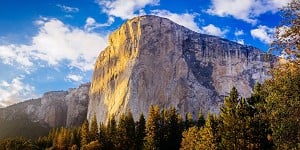In reply to elsewhere:
> It might have even happened every 100 million years or whatever the average age of the earth's surface layers is. Anybody know how many times a bit the earth's surface is likely to have been recycled into something else (geologically) and somewhere else?
I couldn't give you an average age of the crust and upper mantle, but the thing is it's quite different in different places, for different suites of rock. The Torridonian was mostly deposited on-land, in a desert-like landscape because there weren't land plants at the time, but not necessarily dry; many deposits are from rivers or lake. The area gradually sank down (due to plate movements), and other sediments were deposited on top of it (including plenty of marine ones, which can be seen widely further North and include the 'pipe rock' and the Durness Limestone amongst others. But the Torridonian deposits were then protected from the surface by the rocks and sediments above them, and were ultimately brought back up by a combination of continents colliding and thrusting huge sheets up and across, and by huge amounts of igneous rocks being injected and accreted underneath Scotland during the Tertiary, lifting everything else up.
More generally, the continents have been building up for billions of years as the less dense rocks have essentially been left floating on top - so parts of the continental crusts are very old indeed. Oceanic crust is more of a temporary thing - forming as plates move apart, and being consumed again as they move together; it's more dense, so sinks away back below and gets recycled (although some bits do get scraped off and incorporated into island and mountain chains).
Post edited at 13:14









